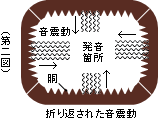I have been looking for the past two weeks on information if the ayasugi bori affects the sound of the Shamisen and how. I have come two the conclusion that it is mainly a matter of opinion but i am still unsure. Does any one have any information on how it influences the sound. I’ve heard comments that it is like the structure on a concert call, yet that does not sound convincing to me at all due to the longitude of the sound wave. Maybe someone that has sound equipment to measure the actual differences, I 'm not sure, but I am really wanting to know if this is a mater of an opinion or not.
I’m not a sound engineer, but I can’t imagine that a concert hall and the inside of a dou are at all comparable. Concert hall design is all about directing sound toward the audience while maximizing the right kind of reverb and killing the wrong kind (aka, echoes). I don’t see that this applies to the inside of a dou at all.
I have no doubt ayasugi bori changes the sound, though. Sound travels more like ripples in a pond (but in 3D - in all directions) than in a direct line. The sound waves (or some portion of those waves) will hit the baffles and they will affect how the sound travels. I assume this means they they will bounce around in a more chaotic nature.
Does this scientifically produce a “better” sound? Is this even measurable? I have my doubts. Something like this will always be heavily subjective. The same can be said about natural vs synthetic skin or bekkou vs faux bekkou. It’s a subjective measurement vs a subjective standard. Reading various stuff on the web about ayasugi bori seems to support this, as there is not even 100% agreement whether it actually does improve the sound.
Having said all that, I find ayasugi bori to be a thing of beauty whether it sounds better or not. When asked why he wanted the inside as well as the outside of his computers to be beautiful, Steve Jobs famously said “For you to sleep well at night, the aesthetic, the quality, has to be carried all the way through.” I think (and I am for from an expert by any means) that ayasugi bori reflects a much higher level of craftsmanship. From everything I have seen, finding a shamisen with well-executed ayasugi bori means you have found one where the creator was willing to take a little extra step to make a shamisen that is as nice as possible.
True, but if I am the one making it is scares me to think I could make a mistake while carving,
I keep thinking I will try my hand at making a shamisen one day, but after watching a video of @Kyle_Abbott doing ayasugi bori, I swore I would never even try. I am no Steve Jobs! 
Well…
All of my shamisen have ayasugi-bori. They all sound great.
None of the bachido shamisen have ayasugi-bori. They all sound great.
Would the addition of it make them better? Opinions are split :V. Let’s look at two.
The owner over at Sansuien near Nagoya (whose opinion I respect highly, he’s got an engineering background) says no.
綾杉は音色がよくなると言われました。
回答:「綾杉彫り自体には根拠がありません。音色が良いとすると別の理由です」
"They say Ayasugi made the sound better!*
“Ayasugi itself can’t have that effect. If the sound has improved, there’s another reason at play”
https://www.shamisen.ne.jp/shamisen_life/shop/sassi9.htm
The people over Wagakki-ichiba hold a more traditional stance
The theory is that when you strike the dou you get an initial sound wave that extends out in all directions. When this sound wave hits the baffles in the ayasugi-bori, it reflects back in a weaker wave creating a more pleasant sound as it impacts with the waves from successive hits.


https://www.wagakki-ichiba.com/sozai.htm
For my part, I’ve been able to guess ayasugibori vs non-ayasugibori shamisen before - but to be honest, I could have just gotten lucky.
Ayasugibori is so common on higher end instruments that it’s difficult to extricate whatever effect it has from the rest of the small numbers game that adds up to the sonic quality of an instrument. For me, it’s hard to believe that such small baffles create an appreciable difference as compared to technique, craftsmanship, skinning, or wood quality. If there is an effect (if I wasn’t just getting lucky), I’d liken it to somewhere along the impact of bachi, koma, or string.
I vaguely recall seeing an ornate “ayasugi” (although it technically wasn’t) carving on the inside of a vintage dou that didn’t have herring bone pattern, but rather a floral design as well as some Japanese style thatch patterns. I doubt it was intended to influence the sound quality. 
Man, I wish I could remember who posted that picture. It was a stunner!
That’s gorgeous! What incredible craftsmanship! I would almost hate to re-skin it. Truly a work of art.
Ah, there we go! Good memory!
